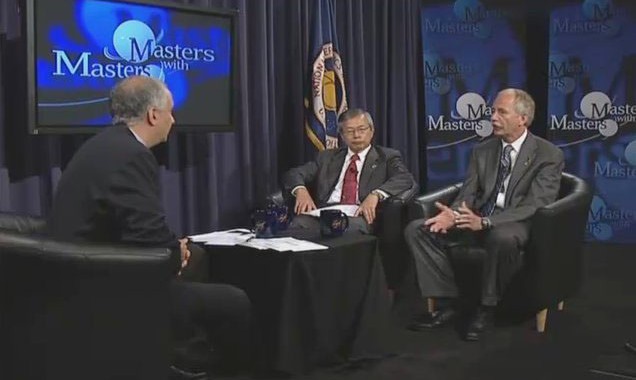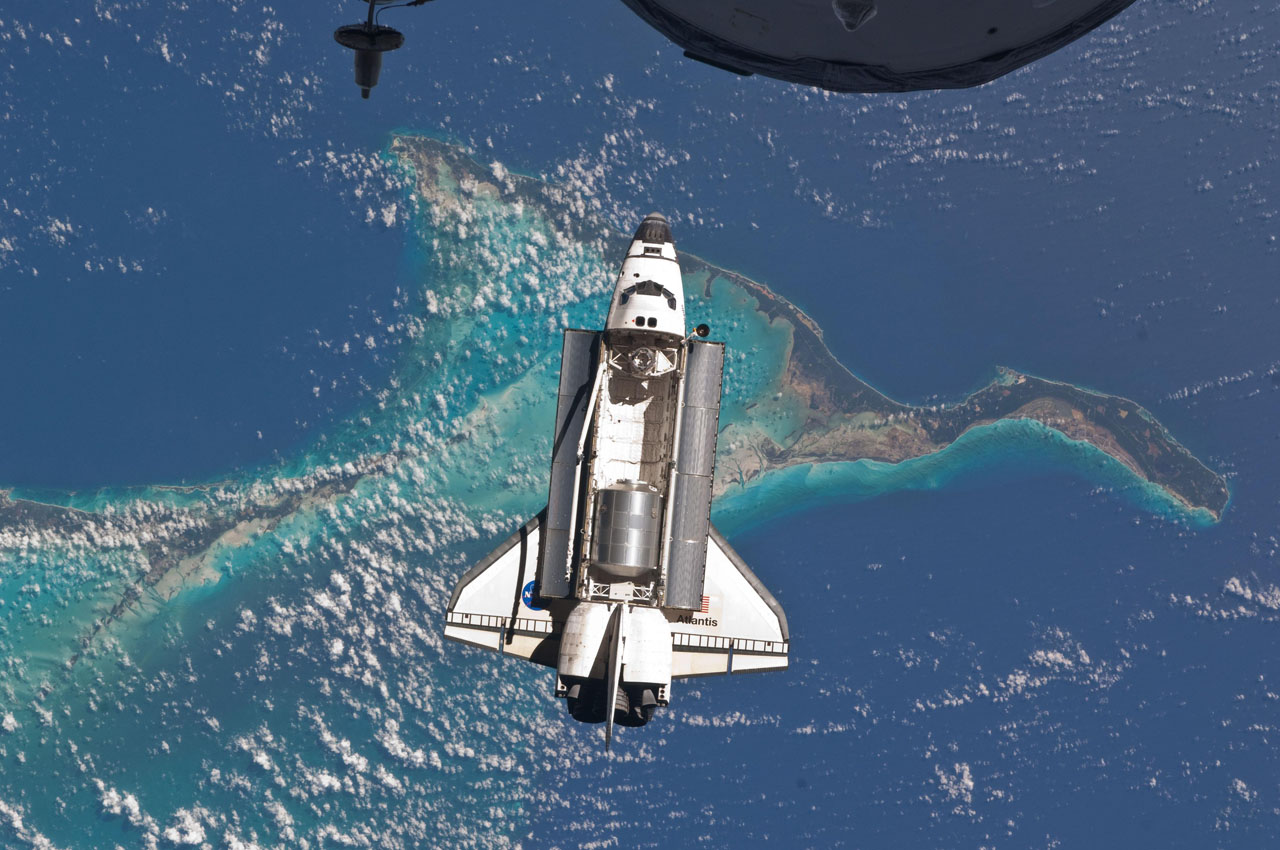
Masters with Masters 9 featured NASA Associate Administrator for Space Operations Bill Gerstenmaier and JAXA Executive Director for Human Space Systems and Utilization Kuniaki Shiraki at NASA Headquarters on July 11, 2011. Credit: NASA APPEL
July 20, 2011 Vol. 4, Issue 5
The International Space Station has taught us what it really means to engage in international collaboration, according to Bill Gerstenmaier and Dr. Kuniaki Shiraki.
Gerstenmaier, NASA Associate Administrator for Space Operations, and Shiraki, Executive Director of the Human Space Systems and Utilization Mission Directorate at the Japan Aerospace Exploration Agency (JAXA), shared personal reflections on the role of international collaboration in complex programs in a Masters with Masters training event at the James E. Webb Auditorium at NASA Headquarters on July 11, 2011.
Gerstenmaier emphasized the importance of building trusting relationships over time among the International Space Station (ISS) partners. “We have a personal relationship where I can share what’s really going on within the agency with my international partners so they can see the struggles that we’re facing, and they can describe to us the struggles that they’re facing,” he said. “We realized that by really sharing things back and forth, we could actually help each other in a way to move forward.”

Masters with Masters 9 featured NASA Associate Administrator for Space Operations Bill Gerstenmaier and JAXA Executive Director for Human Space Systems and Utilization Kuniaki Shiraki at NASA Headquarters on July 11, 2011.
Credit: NASA APPEL
Shiraki discussed the need for leaders to make decisions that address their own interests as well as those of their partners. He recounted how the planned shipment of JAXA’s Kibo module to Kennedy Space Center (KSC) in 2003 coincided with the aftermath of the Columbia accident. After much deliberation, he decided to ship Kibo even though the shuttle was grounded indefinitely. “It…seemed good to show movement in the station program, that station was still moving forward even though Columbia was going on,” he said. “I thought it would be beneficial to both Japan and to NASA that we made this move early.”
Gerstenmaier pointed out that a lesson from the Columbia accident was the interdependence among the ISS partners. “As we go forward in future programs, we need to start with that concept to begin with. It’s not separate pieces integrated into a whole,” he said.
Shiraki stressed the need to learn about the culture, politics, organization, and processes of other space agencies. “We are trying to do things the way we do them in Japan, but there are different ways of doing [things] in NASA, and the first thing we have to do is learn the difference,” he said. “What is the difference between what we are doing?”
Gerstenmaier said that after years of working together, the ISS partners have been able to transcend many of their differences. “We’ve bridged the gap and have our own culture—the ISS culture. But it only came after multiple years and multiple challenges of working with each other.”
Both expressed excitement about tapping the full potential of the ISS’s research capabilities over the coming decade. Shiraki focused on how the space station can improve the future and benefit humankind, noting that its utilization should “appeal to the world.”
Masters with Masters events bring together experts to share insights, lessons learned, and best practices in a setting that promotes learning and discovery through dialogue.
Watch past Masters with Masters video clips on the NASA APPEL YouTube channel.








